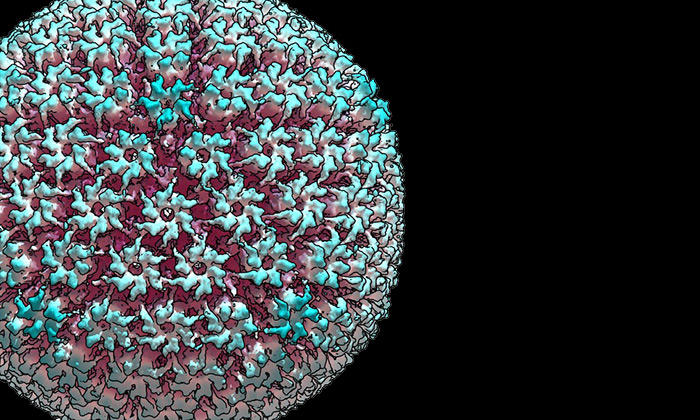Chemists at The University of Texas at Austin have developed a laboratory technique that can detect single viruses floating in a solution of water. A version of the technique had previously been demonstrated for metals and other inorganic materials, but this is the first time it's been demonstrated on biological samples.
 Jeffrey Dick, a graduate student working in the lab of professor Allen Bard, is lead author on a paper describing the research this week in the journal Proceedings of the National Academy of Sciences.
Jeffrey Dick, a graduate student working in the lab of professor Allen Bard, is lead author on a paper describing the research this week in the journal Proceedings of the National Academy of Sciences.
"What's most exciting is that now we can start to ask lots of new questions," says Dick. "Can we improve it so that we can determine the size and structure of a virus? Can we push the technique down to detect individual molecules?"
The researchers demonstrated their new technique on a virus that belongs to the same family as the herpes virus. To detect individual viruses, the team places an electrode—a wire that conducts electricity, in this case, one that is thinner than a human cell—in the solution. When viruses or other small objects bump into the electrode and stick, a special instrument detects a change in the electric current passing through the solution. By adding microscopic polystyrene beads designed to stick to specific viruses, they can confirm the presence of viruses in the solution. There are telltale differences in electric current depending on whether polystyrene beads alone or beads attached to viruses bump into the electrode.
Could this new technique someday lead to a sensor that could quickly detect low concentrations of viruses such as Ebola or HIV in a person?
Don’t expect to see a working version of the sensor used to detect viruses in humans any time soon. As Bard points out, blood is much more complex than water. And so far, says Dick, their technique can't differentiate an Ebola virus from an HIV virus from a human blood cell.
To get the viruses he needed for the research, Dick contacted virology professor Jason Upton, who became a collaborator and co-author on the paper.
"It's amazing that two very different disciplines, virology and electrochemistry, can merge to solve these problems," says Dick. "I think the future of science is in bridging traditional disciplines to address complicated issues relevant to society."

















Comments